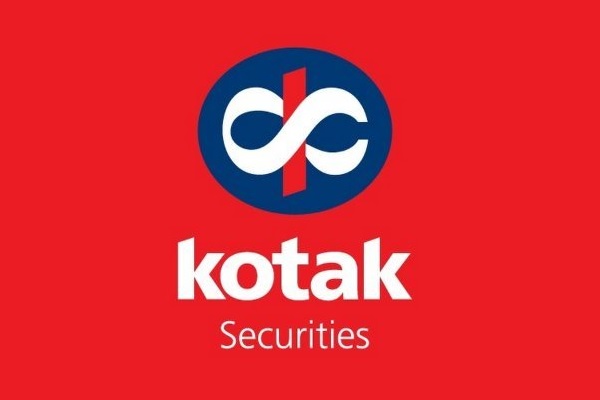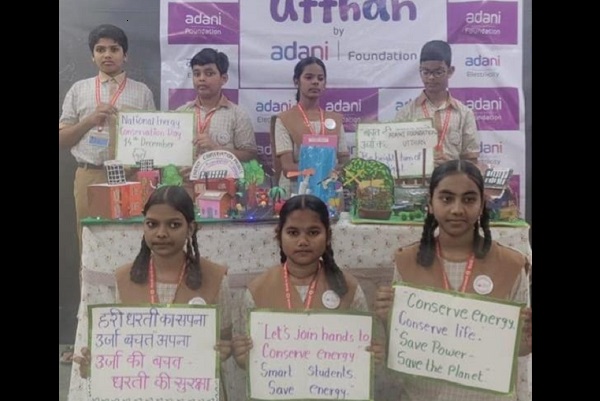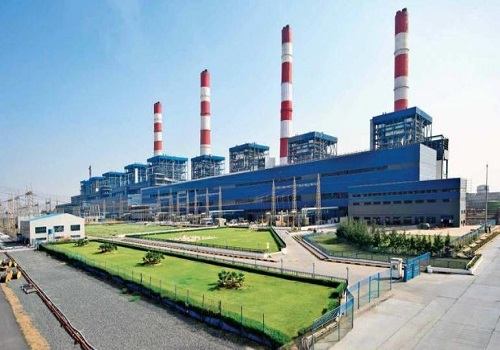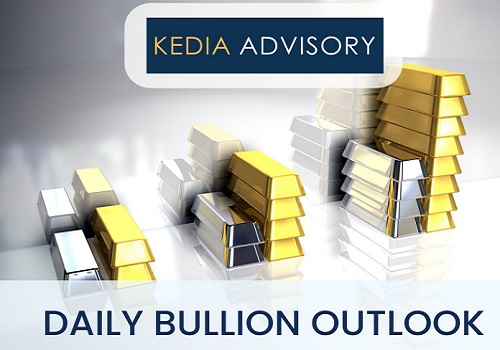Aluminium trading range for the day is 234.1-240.7 - Kedia Advisory

Gold
Gold prices edged higher by 0.12% to settle at Rs 95,389 amid a mix of economic signals from the U.S. and strong investment demand. The marginal price gain came as investors digested fresh U.S. economic data and commentary from White House adviser Kevin Hassett, who expressed optimism that a trade court ruling blocking tariffs would be reversed. Revised GDP figures showed the U.S. economy contracted by 0.2% in Q1 2025—an improvement from the initial -0.3% estimate but still reflecting the first quarterly contraction in three years. Additionally, weekly jobless claims rose to 240,000, with continuing claims reaching their highest since 2021, pointing to a softening labor market. In a supportive development for bullion, minutes from the Federal Reserve's May meeting highlighted a cautious, wait-and-see approach to policy, which markets interpreted as a possible pause in rate hikes—typically a positive factor for gold. Despite robust investment inflows—up 170% year-on-year in Q1 2025—global gold jewellery demand dropped 21% to 380.3 tons amid elevated prices. Central bank gold purchases also dipped 21% to 243.7 tons. In India, gold demand remained subdued due to high prices and rupee weakness, with dealers offering discounts of up to $49/oz. Technically, gold is under short covering, as open interest dropped sharply by 49.33% to 2,038 contracts while prices rose Rs 111. Immediate support lies at Rs 94,685, with further downside testing possible at Rs 93,975. Resistance is seen at Rs 95,920, with potential to test Rs 96,445 if bullish momentum persists.
Trading Ideas:
* Gold trading range for the day is 93975-96445.
* Gold gained as US data showed economic contraction and rising jobless claims.
* Weekly jobless claims rose to 240,000, suggesting slower labor market recovery.
* Fed minutes signal wait-and-see approach amid uncertainty over recent policy impacts.
Silver
Silver prices rose by 0.59% to settle at Rs 97,826, supported by softer U.S. jobs data and market reaction to a court ruling that blocked most of former President Trump’s tariffs. The U.S. Court of International Trade ruled that Trump exceeded his authority in imposing the tariffs, delivering a setback to his trade policy. Meanwhile, unemployment claims rose more than expected, indicating a potential slowdown in the labor market. Federal Reserve minutes from the May meeting further reinforced a cautious outlook, with policymakers opting for a wait-and-see approach amid rising risks of both inflation and unemployment. Market participants now await the U.S. Personal Consumption Expenditures (PCE) data for further cues on monetary policy. On the fundamentals side, silver continues to enjoy a strong demand backdrop. The market is poised to record its fifth consecutive annual deficit in 2025, albeit narrower at 117.6 million troy ounces. Industrial fabrication, a key pillar of silver demand, is forecast to rise 3% to a record high of over 700 million ounces, driven by green technology and electronics. Physical investment demand is expected to rise by 3%, with renewed interest in Europe and North America, while demand for silver bars and coins is projected to rebound 7% after a steep drop in 2024. Technically, the market is experiencing short covering, evidenced by a 1.21% drop in open interest to 18,264 while prices climbed Rs 571. Silver is finding support at Rs 97,290, with further downside testing possible at Rs 96,760. Resistance is now at Rs 98,400, and a breakout above this could lead to a test of Rs 98,980.
Trading Ideas:
* Silver trading range for the day is 96760-98980.
* Silver gains as softer U.S. jobless data increased expectations for looser monetary policy.
* U.S. court blocked most of Trump’s tariffs, weakening his trade policy framework.
* Fed minutes showed cautious stance amid policy uncertainty and dual risks of inflation, unemployment.
Crude oil
Crude oil prices fell by 1.72% to settle at Rs 5,215 amid investor caution ahead of the upcoming OPEC+ meeting scheduled for May 31, where a potential output hike of 411,000 barrels per day (bpd) for July is anticipated. Although Kazakhstan's deputy energy minister hinted at a production increase, clarity is still lacking as Russian officials noted that no formal discussion has occurred. Market expectations are mixed, with Goldman Sachs analysts suggesting that OPEC+ might opt to hold output steady after the July adjustment due to new supply projects, weakening global demand, and growing oil inventories. Geopolitical tensions also played a role in influencing sentiment. President Trump hinted at new sanctions on Russia amidst stalled Ukraine negotiations, while the U.S. tightened restrictions on Venezuelan oil exports by limiting Chevron’s operations. Additionally, EU scrutiny of U.S. investments has added to global trade uncertainty. From a supply-demand perspective, recent U.S. Energy Information Administration (EIA) data indicated a surprise build in crude oil inventories, which rose by 1.3 million barrels against expectations for a draw. Gasoline and distillate stockpiles also increased, adding to bearish pressure. Technically, the crude oil market is under fresh selling pressure as open interest rose 1.74% to 11,683 while prices declined Rs 91. Immediate support is at Rs 5,136, with further downside toward Rs 5,056. Resistance is seen at Rs 5,347, and a breakout could push prices toward Rs 5,478.
Trading Ideas:
* Crudeoil trading range for the day is 5056-5478.
* Crude oil dropped ahead of OPEC+ decision, with markets expecting a July output hike.
* OPEC+ may increase output by 411,000 bpd; final decision expected on May 31.
* Kazakhstan has informed OPEC that it does not intend to reduce its oil production.
Natural gas
Natural gas prices declined by 1.93% to settle at Rs 299.4, pressured by declining demand and reduced gas flows to U.S. LNG export terminals. Feedgas supply to the eight major LNG plants has dropped to 15.1 billion cubic feet per day (bcfd) in May from April's record high of 16.0 bcfd. This decline is mainly due to maintenance at key terminals such as Cameron, Corpus Christi, and Sabine Pass, alongside short-term outages at Freeport LNG. Further maintenance, especially at Sabine Pass, is expected in June, potentially sustaining the downward pressure on demand. On the production side, U.S. natural gas output has slightly decreased to 105.0 bcfd in May from April’s peak levels. This dip is attributed to seasonal spring pipeline maintenance, particularly on Kinder Morgan’s Permian Highway. However, forecasts of warmer-than-normal weather through mid-June could potentially support increased residential and commercial demand for cooling, possibly limiting further downside. The latest storage data showed a 101 billion cubic feet (bcf) injection, bringing total stocks to 2.476 trillion cubic feet, aligning with expectations and continuing the seasonal build-up. Although inventories remain 11.3% below last year’s level, they are still 3.9% above the five-year average, providing a cushion against supply shocks. Technically, the market is under fresh selling as open interest surged 14.11% to 13,730. Immediate support is seen at Rs 293.9, with further downside potential to Rs 288.3. Resistance lies at Rs 305.6, and a breakout above this could push prices toward Rs 311.7.
Trading Ideas:
* Naturalgas trading range for the day is 288.3-311.7.
* Natural gas prices fell amid weaker demand and reduced LNG export plant feedgas flows.
* US utilities added 101 billion cubic feet of natural gas to storage from the previous week to 2.476 trillion cubic feet
* Average LNG feedgas dropped to 15.1 bcfd in May from April’s record 16.0 bcfd.
Copper
Copper prices edged slightly lower by 0.05% to settle at Rs 862.25 amid concerns over weakening demand and indications of increasing supply flows, particularly toward North America. The International Copper Study Group (ICSG) reported a 289,000 metric ton surplus in the global refined copper market for Q1 2025, up from 268,000 tons a year earlier, as new investments in South American mining operations boosted output. This supply overhang has weighed on market sentiment, despite persistent near-term tightness indicated by backwardation in LME futures. Inventory data presented a mixed outlook. LME-registered copper stocks dropped 8% to 164,725 tons, while Shanghai Futures Exchange (SHFE) inventories fell 9% to 98,671 tons. However, COMEX-registered warehouse stocks surged to 174,607 tons—an 87% increase since February and the highest since 2018. This growth is attributed to traders front-loading shipments to the U.S. ahead of potential import tariffs by President Trump, aimed at supporting domestic smelting capacity. China's copper imports in April remained flat year-on-year at 438,000 metric tons, but total imports for the first four months of 2025 fell 3.9%, reflecting shifting global trade flows. Technically, copper is under fresh selling pressure as open interest rose by 0.21% to 6,615 contracts while prices slipped Rs 0.4. Immediate support lies at Rs 860.2, with further downside likely towards Rs 858. Resistance is now seen at Rs 866, and a break above this could lead to a test of Rs 869.6.
Trading Ideas:
* Copper trading range for the day is 858-869.6.
* Copper fell as surplus widened to 289,000 tons amid strong South American output.
* Copper market in 17,000 metric tons surplus in Mar 2025 – ICSG
* COMEX copper stocks surged 87% since February, nearing LME levels for first time since 2022.
Zinc
Zinc prices declined by 0.41% to settle at Rs 254.3 amid growing macroeconomic uncertainties that weighed on the demand outlook for galvanization, zinc’s primary industrial application. Tensions between the US and China momentarily eased with partial sanction relief, but the absence of solid trade agreements and the looming reactivation of reciprocal tariffs from Washington reignited fears of pressure on China’s durable goods industry, a significant consumer of zinc. On the supply front, disruptions are evident. Teck Resources' Red Dog Mine in Alaska, the world’s largest zinc mine, reported a 20% annual production drop in Q1 to 145,300 tonnes. Additionally, Australian smelter Nyrstar announced a 25% output cut due to ore shortages and uncompetitive treatment charges. Shanghai Futures Exchange zinc inventories declined by 4.9% from the previous week, reinforcing the tightness in spot supply. However, broader production trends suggest a slow uptick. China's refined zinc output rose 1.6% MoM and around 10% YoY in April, with cumulative Jan–Apr production increasing by only 0.3% YoY—below expectations. A marginal MoM increase of less than 0.1% is expected for May, but with over 3% YoY growth. Globally, the zinc market surplus narrowed to 23,700 metric tons in March from 75,900 tons in February, indicating tighter conditions. Technically, zinc is under fresh selling as open interest increased by 5.62% to 2,876 lots while prices declined Rs 1.05. Support is now at Rs 252.8, with further downside potential to Rs 251.3, while resistance is likely at Rs 257.1, and a break above may lead to testing Rs 259.9.
Trading Ideas:
* Zinc trading range for the day is 251.3-259.9.
* Zinc prices ease as demand outlook wavers despite tight supply
* Nyrstar to cut 2025 smelter output by 25% amid low ore availability and margins.
* SHFE zinc inventories dropped 4.9%, with maintenance and tight spot supply supporting prices.
Aluminium
Aluminium prices declined by 0.48% to settle at Rs 236.45, as seasonal domestic weakness and global trade uncertainties exerted downward pressure on the market. Despite the bearish sentiment, the downside remains limited, supported by rising alumina prices due to tightening supply, increasing cost pressures, and production curbs from refinery maintenance in key regions like Shanxi and Guizhou. Environmental constraints and limited bauxite availability are also contributing to a tighter alumina spot market. According to the World Bureau of Metal Statistics (WBMS), global primary aluminium production in March reached 6.1609 million tons, while consumption stood at 5.8836 million tons, resulting in a surplus of 277,300 tons. For the first quarter of 2025, the surplus expanded to 538,700 tons. Furthermore, the International Aluminium Institute (IAI) reported that global primary aluminium output rose by 2.2% year-on-year to 6.033 million tons in April. However, the spread between the cash and three-month aluminium contracts narrowed to a $2/ton discount, down from a $6 premium, reflecting weak short-term demand. In China, aluminium production rose by 4.2% year-on-year to 3.75 million tons in April, pushing cumulative January–April output to 14.79 million tons, a 3.4% increase. Technically, aluminium remains under fresh selling pressure with a 0.36% gain in open interest to 4,459 lots. Prices are now testing support at ?235.3, with further downside to ?234.1 possible. Resistance is expected at Rs 238.6, and a breakout above that could push prices toward Rs 240.7.
Trading Ideas:
* Aluminium trading range for the day is 234.1-240.7.
* Aluminium dropped as domestic seasonal weakness and trade uncertainties are exerting dual pressure.
* WBMS data showed a Q1 aluminium surplus of 538,700 tons amid strong global output.
* China raised aluminium production 3.4% YoY Jan–Apr; April output rose 2.2% globally.
Cottoncandy
Cottoncandy prices declined slightly by 0.13% to settle at Rs 54,450 amid long liquidation, driven by a 7.5% drop in open interest, indicating weaker bullish sentiment. The downward price movement comes despite a marginal upward revision in India’s cotton production estimate for the 2024–25 season, which was raised to 291.35 lakh bales from 291.30 lakh bales due to increased output in Odisha. However, the market remains weighed down by sluggish consumption and trade activity. The Cotton Association of India (CAI) reduced its cotton consumption forecast by 8 lakh bales to 307 lakh bales, reflecting slower demand from the domestic textile industry. Exports have also been revised downward by 1 lakh bale to 15 lakh bales, significantly below last year’s 28.36 lakh bales, indicating a 13.36 lakh bale drop in outbound shipments. On the other hand, imports remain robust at 33 lakh bales, with 27.5 lakh bales already brought in by April—nearly double the previous season’s figure. Consequently, ending stocks are projected to rise to 32.54 lakh bales by September 30, 2025, up from 30.19 lakh bales last season. Globally, the U.S. cotton balance sheet saw minor adjustments, including a 100,000-bale reduction in exports and a corresponding increase in ending stocks. Technically, Cottoncandy is under pressure, with immediate support at Rs 54,340 and further downside possible to Rs 54,230. Resistance lies at Rs 54,530, and a break above could see prices testing Rs 54,610.
Trading Ideas:
* Cottoncandy trading range for the day is 54230-54610.
* Cotton prices dropped after India’s production estimate rose slightly to 291.35 lakh bales.
* CAI cut consumption forecast by 8 lakh bales to 307 lakh for the 2024–25 season.
* Cotton exports expected to fall to 15 lakh bales, down 13.36 lakh from last year.
* In Rajkot, a major spot market, the price ended at 25933.6 Rupees dropped by -0.21 percent.
Turmeric
Turmeric futures rose by 1.12% to settle at Rs 14,062, supported by ongoing concerns over reduced production and low arrivals, despite a surge in daily supplies. The rise in prices reflects market optimism amid quality-focused buyer interest and anticipation of lower crop yields. While arrivals increased sharply to around 57,500 quintals from 29,860 quintals in the previous session, the upside was capped due to weak export enquiries. Although the area under turmeric cultivation has expanded to 3.30 lakh hectares—10% more than the previous season—the overall production is not expected to increase proportionally. Adverse weather, including untimely rains, has impacted crop quality, especially in the Nanded region, where reports of small rhizomes and crop rots have emerged. New yields are estimated to be 10–15% lower than last year’s 10.75 lakh tonnes, with more clarity expected once harvesting is complete. On the trade front, turmeric exports for the period April 2024 to March 2025 rose by 8.83% to 1.76 lakh tonnes compared to the previous year. March 2025 exports rose 20.39% month-on-month, though they declined 13.41% year-on-year. Technically, the market is under short covering, with open interest down 2.03% to 14,980 as prices gained Rs 156. Turmeric has support at Rs 13,936, and a fall below could lead to testing Rs 13,808. Resistance is seen at Rs 14,166, with potential to test Rs 14,268 on a breakout.
Trading Ideas:
* Turmeric trading range for the day is 13808-14268.
* Turmeric gained amid persistent concerns about low arrivals and lower production estimates.
* However upside seen limited due to increased arrivals and owing to weak export enquiries.
* Turmeric exports during Apr - Mar 2025, jump by 8.83 percent at 176325.34 tonnes compared to Apr - Mar 2024.
* In Nizamabad, a major spot market, the price ended at 14331.95 Rupees gained by 0.99 percent.
Jeera
Jeera futures edged up by 0.53% to settle at Rs 20,680 amid short covering, despite overall weak demand fundamentals. The domestic market witnessed lower buying activity as the retail season has concluded, and subdued export interest further limited upside momentum. Total arrivals surged to 32,900 bags, up from 28,000 bags in the previous session, adding supply-side pressure and keeping a lid on price gains. The commencement of the new cumin crop in Gujarat has been delayed by around a month due to unfavourable weather conditions, which also affected sowing in Rajasthan. Despite this delay, crop conditions remain healthy, and production is expected to be on par with last season. Demand remains muted, with much of the current export requirements being fulfilled from existing stocks. Farmers are reported to be holding about 20 lakh bags, while only 3–4 lakh bags are likely to be traded by season-end, implying a significant carry-forward stock of approximately 16 lakh bags. On the trade front, Jeera exports saw robust growth during April 2024 to March 2025, rising by 39.63% to 2.12 lakh tonnes compared to the previous year. However, month-on-month export data showed a mixed trend, with March 2025 exports up 33.40% from February 2025 but down 46.03% year-on-year. Technically, the market witnessed short covering, with open interest falling by 2.46% to 6,078 while prices rose Rs 110. Support is now placed at Rs 20,600, and a drop below could test Rs 20,520. Resistance is seen at Rs 20,740, with further gains potentially pushing prices to Rs 20,800.
Trading Ideas:
* Jeera trading range for the day is 20520-20800.
* Jeera gained due to lower buying from domestic buyers despite subdued export demand.
* The current season is expected to have similar production levels as last year due to better crop conditions.
* Jeera exports during Apr - Mar 2025, rose by 39.63 percent at 212502.49 tonnes compared Apr - Mar 2024.
* In Unjha, a major spot market, the price ended at 21016.9 Rupees dropped by -0.71 percent.
Views express by all participants are for information & academic purpose only. Kindly read disclaimer before referring below views

















